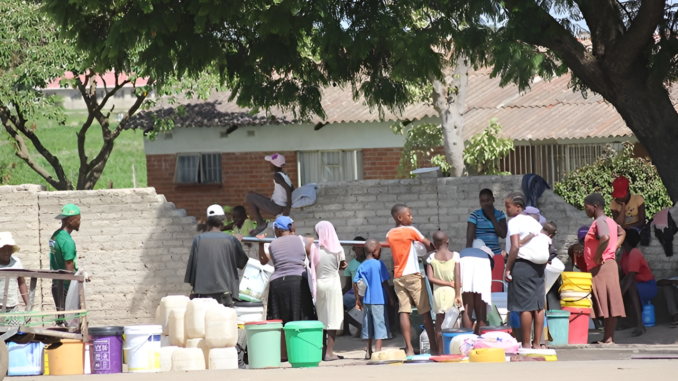
A City Thirsting: Understanding Harare’s Fluctuating Water Supply
Are you looking for affordable and reliable bulk water delivery services in Harare? Call 0772593344 for the best services
Harare, the capital of Zimbabwe, is facing a growing challenge: an unreliable and fluctuating water supply. This issue is not new, but it’s becoming increasingly severe, impacting the lives of residents and the city’s overall development. This blog post aims to delve into the complexities of Harare’s water situation, exploring its causes, consequences, and potential solutions.
A History of Water Stress:
The story of Harare’s water woes is intricately linked to the city’s history and growth. While the city boasts a relatively well-developed infrastructure, including several dams and treatment plants, factors like population growth, urbanization, and climate change have put immense pressure on its water resources.
The Root of the Problem:
Drought and Climate Change: Zimbabwe has experienced prolonged droughts in recent years, significantly impacting water levels in the city’s primary water sources – Lake Chivero, Manyame, and Seke dams. The changing climate exacerbates these droughts, leading to erratic rainfall patterns and reduced water flow into these reservoirs.
Aging Infrastructure: The city’s water infrastructure, built decades ago, is showing signs of wear and tear. Leaky pipes, inadequate treatment facilities, and inefficient distribution systems contribute to significant water losses and a compromised supply.
Pollution and Contamination: Industrial and agricultural activities in the surrounding areas contribute to water pollution, impacting the quality of the water available for consumption. Sewage leaks and improper waste disposal further contaminate water sources.
Population Growth and Urbanization: The rapid growth of Harare’s population, coupled with the influx of people from rural areas, has placed a strain on the existing water supply system. The increased demand for water, combined with a lack of investment in expanding infrastructure, creates a continuous cycle of shortages.
Inefficient Water Management: Inefficient water management practices, including high levels of non-revenue water (water lost due to leaks and theft), poor billing systems, and inadequate monitoring, further aggravate the water shortage problem.
The Impact on Residents and the City:
The fluctuating water supply has significant consequences for Harare’s residents and its overall development:
Health Risks: Limited access to clean water increases the risk of waterborne diseases like cholera and typhoid. The lack of reliable water supply also affects hygiene and sanitation, impacting public health.
Economic Disruption: Businesses and industries face disruptions due to water shortages, hindering productivity and economic growth. Water rationing and restrictions on water use impact industries relying heavily on water, such as agriculture and manufacturing.
Social Inequality: Water shortages disproportionately affect the most vulnerable populations, including low-income communities and those living in informal settlements. These communities often lack access to piped water and rely on unreliable and often contaminated sources.
Environmental Degradation: The pressure on water resources leads to the depletion of groundwater and the degradation of water ecosystems. The impact of these factors further exacerbates the water scarcity problem.
Solutions for a Sustainable Future:
Addressing Harare’s water challenges requires a multi-pronged approach, focusing on:
Improved Water Management: Implementing efficient water management practices, including leak detection and repair, reducing non-revenue water, and upgrading metering systems.
Infrastructure Development: Investing in the rehabilitation and expansion of water infrastructure, including dams, treatment plants, and distribution networks, to meet the growing demands.
Conservation and Demand Management: Promoting water conservation practices among households and industries. Implementing water-saving technologies, educating the public on water conservation, and implementing tariff structures that encourage efficient water use.
Pollution Control: Strengthening regulations and implementing effective enforcement measures to control pollution from industrial and agricultural sources, ensuring the quality of water available for consumption.
Climate Adaptation: Planning for climate change and developing strategies to adapt to its impacts on water resources. This includes exploring alternative water sources, such as rainwater harvesting and groundwater management, and strengthening drought preparedness measures.
Community Involvement and Collaboration:
Effective solutions require the participation and collaboration of all stakeholders – government, local communities, civil society organizations, and the private sector. Community-based initiatives, such as water committees and community-driven water management projects, can be crucial in promoting water conservation and ensuring equitable access to water.
The Path Forward:
Harare’s water challenges are complex and require a long-term, sustainable approach. By addressing the root causes, investing in infrastructure, promoting water conservation, and fostering community involvement, the city can work towards ensuring a reliable and sustainable water supply for its residents and future generations.
This blog post is just the beginning of the conversation. We encourage you to share your thoughts, experiences, and potential solutions in the comments section below. Together, we can work towards a water-secure future for Harare.

Leave a Reply